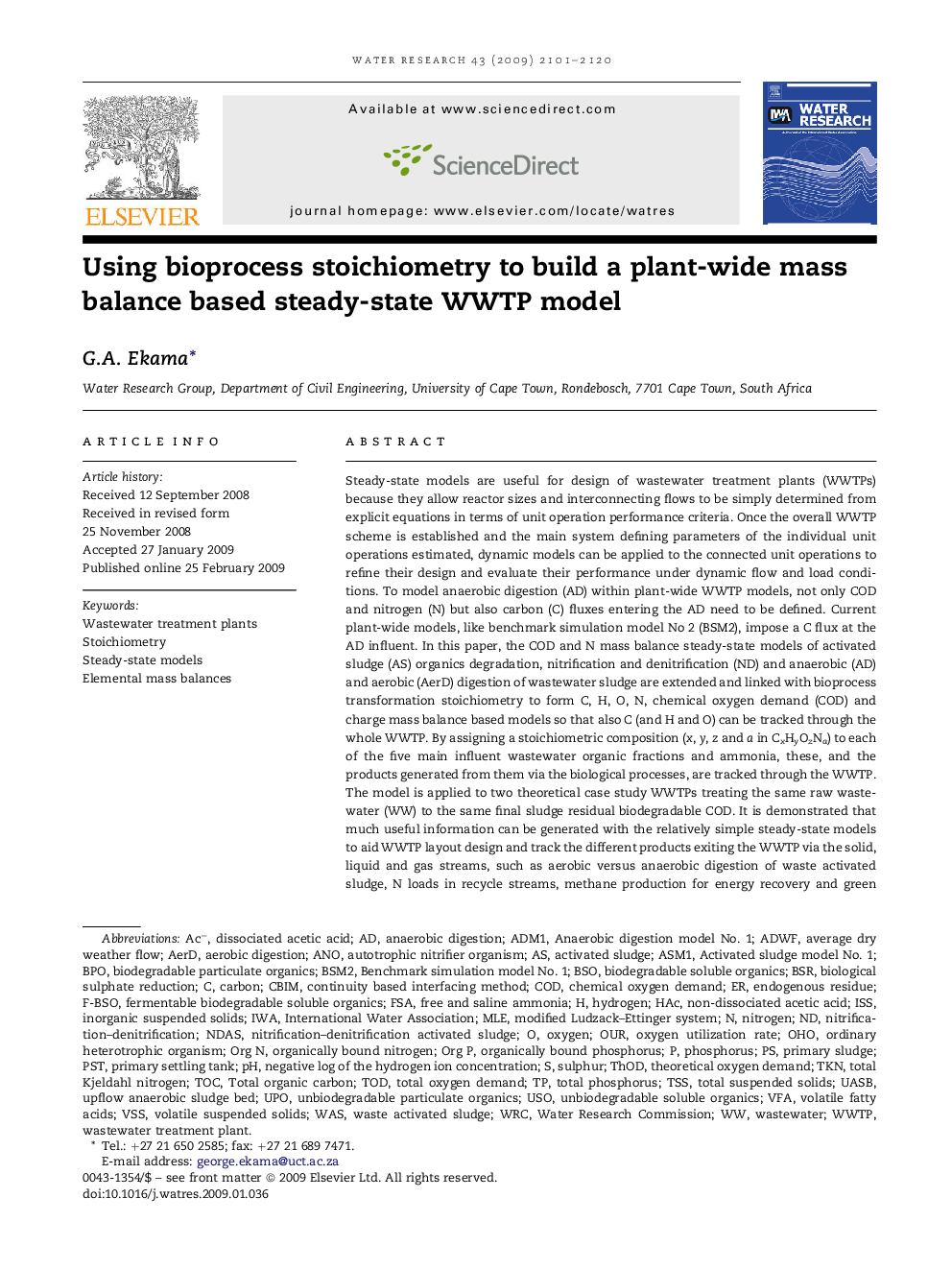| کد مقاله | کد نشریه | سال انتشار | مقاله انگلیسی | نسخه تمام متن |
|---|---|---|---|---|
| 4484998 | 1316938 | 2009 | 20 صفحه PDF | دانلود رایگان |

Steady-state models are useful for design of wastewater treatment plants (WWTPs) because they allow reactor sizes and interconnecting flows to be simply determined from explicit equations in terms of unit operation performance criteria. Once the overall WWTP scheme is established and the main system defining parameters of the individual unit operations estimated, dynamic models can be applied to the connected unit operations to refine their design and evaluate their performance under dynamic flow and load conditions. To model anaerobic digestion (AD) within plant-wide WWTP models, not only COD and nitrogen (N) but also carbon (C) fluxes entering the AD need to be defined. Current plant-wide models, like benchmark simulation model No 2 (BSM2), impose a C flux at the AD influent. In this paper, the COD and N mass balance steady-state models of activated sludge (AS) organics degradation, nitrification and denitrification (ND) and anaerobic (AD) and aerobic (AerD) digestion of wastewater sludge are extended and linked with bioprocess transformation stoichiometry to form C, H, O, N, chemical oxygen demand (COD) and charge mass balance based models so that also C (and H and O) can be tracked through the whole WWTP. By assigning a stoichiometric composition (x, y, z and a in CxHyOzNa) to each of the five main influent wastewater organic fractions and ammonia, these, and the products generated from them via the biological processes, are tracked through the WWTP. The model is applied to two theoretical case study WWTPs treating the same raw wastewater (WW) to the same final sludge residual biodegradable COD. It is demonstrated that much useful information can be generated with the relatively simple steady-state models to aid WWTP layout design and track the different products exiting the WWTP via the solid, liquid and gas streams, such as aerobic versus anaerobic digestion of waste activated sludge, N loads in recycle streams, methane production for energy recovery and green house gas (CO2, CH4) generation. To reduce trial and error usage of WWTP simulation software, it is recommended that they are extended to include pre-processors based on mass balance steady-state models to assist with WWTP layout design, unit operation selection, reactor sizing, option evaluation and comparison and wastewater characterization before dynamic simulation.
Journal: Water Research - Volume 43, Issue 8, May 2009, Pages 2101–2120